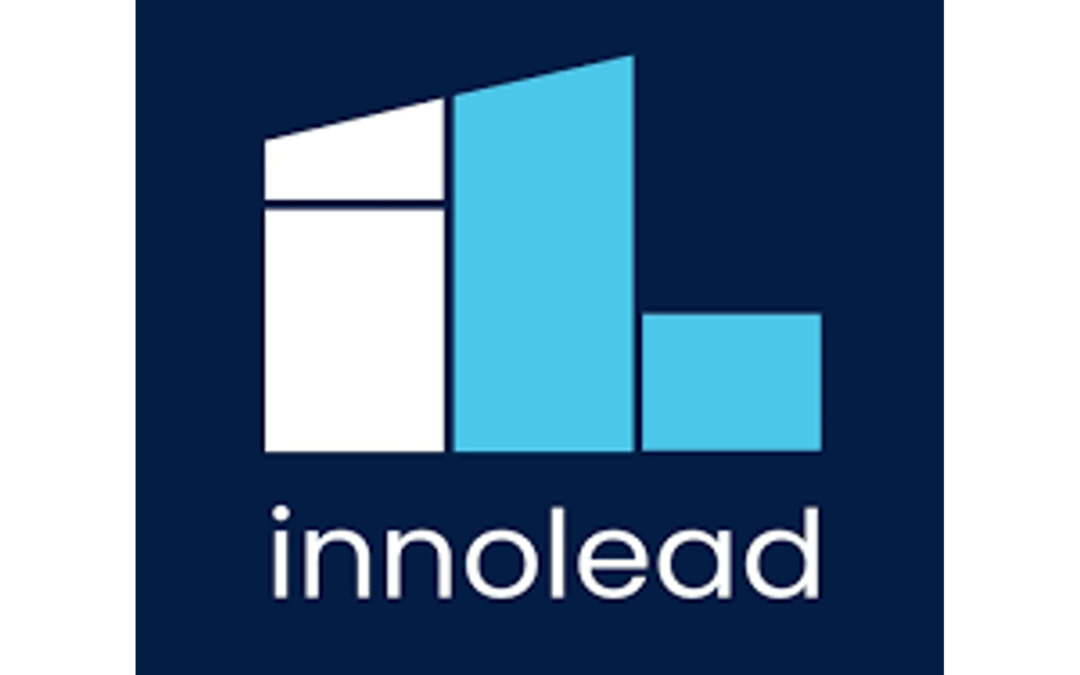
by Robyn Bolton | Feb 26, 2025 | Automation & Tech, Innovation
We’ve all seen the apocalyptic headlines about robots coming for our jobs. The AI revolution has companies throwing money at shiny new tech while workers polish their résumés, bracing for the inevitable pink slip. But what if we have it completely, totally, and utterly backward? What if the real drivers of automation success have nothing to do with the technology itself?
That’s precisely what an MIT study of 9,000+ workers across nine countries asserts. While the doomsayers have predicted the end of human workers since the introduction of the assembly line, those very workers are challenging everything we think we know about automation in the workplace.
The Secret Ingredient for Technology ROI
MIT surveyed workers across the manufacturing industry—50% of whom reported frequently performing routine tasks—and found that the majority ultimately welcome automation. But only when one critical condition is present. And it’s one that most executives completely miss while they’re busy signing purchase orders for the latest AI and automation systems.
Trust.
Read that again because while you’re focused on selecting the perfect technology, your actual return depends more on whether your team feels valued and believes you are invested in their safety and professional growth.
Workers Who Trust, Automate
This trust dynamic explains why identical technologies succeed in some organizations and fail in others. According to MIT’s research:
- Job satisfaction is the second strongest indicator of technology acceptance, with a 10% improvement that researchers identified as consistently significant across all analytical models
- Feeling valued by their employer shows a highly significant 9% increase in positive attitudes toward automation
- Trust also consistently predicts automation acceptance, as workers scoring higher on trust measures are significantly more likely to view new technologies positively.
For example, Sam Sayer, an employee at a New Hampshire cutting tool manufacturer, has become an automation champion because his employer helped him experience how factory-floor robots could free him from routine tasks and allow him to focus on more complex problem-solving. “I worked in factories for years before I ever saw a robot. Now I’m teaching my colleagues on the factory floor how to use them.”
This contrasts with an aerospace manufacturer in Ohio that hired a third party to integrate a robot into its warehouse processes. Despite the company’s efforts to position the robot as a teammate, even giving it a name, workers resisted the technology because they didn’t trust the implementation process or see clear personal benefits.
These patterns hold across industries and countries: When workers perceive their employer as invested in their development and well-being, automation initiatives succeed. When that foundation is missing, even the most sophisticated technologies falter.
Four Steps to Convert Resistors to Champions
Whether it’s for the factory floor or the office laptop, if you want ROI and revenue growth from your automation investments, start with your people:
- Design roles that connect workers to outcomes: When people see how their input shapes results, they become natural technology allies.
- Create visible growth pathways. Workers motivated by career advancement are significantly more likely to embrace new technologies.
- Align financial incentives with implementation goals. When workers see the personal benefits of adoption, resistance evaporates faster than free donuts in the break room.
- Make safety improvements the leading edge of your technology story. It’s the most universally appreciated benefit of automation.
A Provocative Challenge
Ask yourself this (potentially) uncomfortable question: Are you investing as much in trust as you are in technology?
Because if not, you might as well set fire to a portion of your automation budget right now. At least you’d get some heat from it.
The choice isn’t between technology and workers—it’s between implementations that honor human relationships and those that don’t. The former generates returns; the latter generates résumé updates.
What are you choosing?

by Robyn Bolton | Feb 19, 2025 | Podcasts

by Robyn Bolton | Feb 18, 2025 | Innovation, Leadership, Metrics, Tips, Tricks, & Tools
Innovation is undergoing a metamorphosis, and while it may seem like the current goo-stage is the hard part (it’s certainly not easy!), our greatest challenge is still ahead. Because while we may emerge as beautiful butterflies, we still need to get buy-in for change from a colony of skeptical caterpillars who’ve grown weary of transformation talk.
The Old Playbook Is Dead, Too
Picture this: A butterfly lands, armed with PowerPoint slides about “The Future of Leaf-Eating” and projections showing “10x Nectar Collection Potential.” The caterpillars stare blankly, having seen this show before.
The old approach – big presentations, executive sponsorship, and promises of massive returns within 24 months – isn’t just ineffective. It’s harmful. Each failed transformation makes the next one harder, turning your caterpillars more cynical and more determined to cling to their leaves.
The Secret Most Change Experts Miss
Butterflies don’t convince caterpillars to transform by showing off their wings. They create conditions where transformation feels possible, necessary, and safe. Your job isn’t to sell the end state – it’s to help others see their own potential for change.
Here’s how:
Start With the Hungriest Caterpillars
Find those who feel the limitations of their current state most acutely. They’re not satisfied with their current leaf, and they’re curious about what lies beyond. These early adopters become your first chrysalis cohort.
Make it About Their Problems, Not Your Vision
Instead of talking about transformation, focus on specific pain points. “Wouldn’t it be easier to reach that juicy leaf if you could fly?” is more compelling than “Flying represents a paradigm shift in leaf acquisition strategy.”
Build a Network of Proof
Every successful mini-transformation creates evidence that change is possible. When one caterpillar successfully navigates their chrysalis phase, others pay attention. Let your transformed allies tell their stories.
Set Realistic Expectations
Metamorphosis takes time and isn’t always pretty. Be honest about the goo phase – that messy middle where things fall apart before they come together. This builds trust and prepares people for the real journey, not the sanitized version.
Where to Start
- Identify your first chrysalis cohort – the people already feeling the limits of their current state
- Focus on solving immediate problems that showcase the benefits of change
- Document and share small victories, letting others tell their transformation stories
- Create realistic timelines that acknowledge both quick wins and longer-term metamorphosis
What’s your experience? Have you successfully guided a transformation without relying on buzzwords and fancy presentations? Drop your stories in the comments.
After all, we’re all just caterpillars and butterflies helping each other find our wings.

by Robyn Bolton | Feb 12, 2025 | Innovation, Leadership
When times get tough, the first things most companies cut are the “luxuries.” That includes their innovation teams. But as companies dismantle their labs, teams, and other structures, a crucial question emerges: Who’s working on growth?
Cutting innovation teams doesn’t just cut a branch off the org chart. It eliminates capabilities that are fundamental to sustaining and growing a business and culture.
So why throw the baby out with the bathwater? Here’s a scenario that might sound familiar: Your innovation team created something brilliant. The prototype works, early users love it, and the business case is solid. But six months later, it’s gathering dust because no one in the core business knew how to—or wanted to—move it forward.
This isn’t a failure of innovation. It’s a failure of integration.
Wait, I thought integrating innovation with the core business was bad
The traditional innovation team structure – a separate unit with its own space, processes, and culture – solved one problem but created another.
As innovation teams were given the freedom to think differently, they were also given shiny, new, fun, and amenity-filled spaces cordoned off from everyone else. Meanwhile, “everyone else” was stuck in their usual offices and doing the usual things that keep the business running and fund the innovation team’s luxe life.
The resulting us-versus-them mentality fueled resentment, making it easy for “everyone else” to stonewall the innovation team’s efforts by pointing out flaws, uncertainties, and risks.
To be fair, they weren’t doing this to be mean – they were protecting the business. The innovators, meanwhile, grew frustrated, sought help from higher-ups who were happy to help until times got tough and cuts had to be made.
So, one team should work on both innovation and the core business?
Just like we need multiple words to describe the what and why of innovation, we need different operating models that embed innovation capabilities across the organization while protecting the space for them to flourish.
Here’s what it looks like:
- For Core Improvements, let your operational teams lead. They know the problems best, but give them innovation tools and methods. Think of this as equipping your existing workforce with new superpowers, not replacing them with superheroes.
- For Adjacent Expansions, create hybrid teams that combine operational experience with innovation expertise. When expanding into new markets or launching new products, you need both an innovative mindset and operational know-how. Neither alone is sufficient.
- For Radical Reinvention, you still need dedicated teams—but not isolated ones. Their job is to create offerings that reinvent the company and the culture that enables everyone to participate. Establish bridges that connect them with business units and enforce quarterly meetings to share progress, insights, and tools.
This isn’t theory.
Companies like Amazon have been doing this for years with their “working backwards” innovation process used by all teams, not just a special innovation unit. When I worked at P&G, the brand teams worked on core improvements, the New Business Development teams (where I worked) physically sat next to the brand teams and worked on Adjacent expansion, and the radical reinvention teams were co-located with R&D at the technical centers.
Put it into practice
Here’s where to start:
- Map your innovation portfolio to understand what types of innovation you need to hit your goals
- Match your team structures to your innovation types
- Start embedding innovation capabilities across the organization
- Create clear paths for innovations to move from idea to implementation
The transition isn’t easy. It requires rethinking roles and reimagining how innovation happens in your organization. But the alternative – watching your innovation investments evaporate because they can’t cross the bridge back to the core business – is far more painful.
What’s your experience? Drop your stories and strategies in the comments. Let’s figure this out together.

by Robyn Bolton | Feb 3, 2025 | Innovation, Tips, Tricks, & Tools
If innovation (the term) is dead and we will continue to engage in innovation (the activity), how do we talk about creating meaningful change without falling back on meaningless buzzwords? The answer isn’t finding a single replacement word – it’s building a new innovation language that actually describes what we’re trying to achieve. Think of it as upgrading from a crayon to a full set of oil paints – suddenly you can create much more nuanced pictures of progress.
The Problem with One-Size-Fits-All
We’ve spent decades trying to cram every type of progress, change, and improvement into the word “innovation.” It’s like trying to describe all forms of movement with just the word “moving.” Sure, you’re moving but without the specificity of words like walking, running, jumping, bounding, and dancing, you don’t know what or how you’re moving or why.
That’s why using “innovation” to describe everything different from today doesn’t work.
Use More Precise Language for What and How
Before we throw everything out, let’s keep what actually works: Innovation means “something new that creates value.” That last bit is crucial – it’s what separates meaningful change from just doing new stuff for novelty’s sake. (Looking at you, QR code on toothpaste tutorials.)
But, just like “dancing” is a specific form of movement, we need more precise language to describe what the new value-creating thing is that we’re doing:
- Core IMPROVEMENTS: Making existing things better. It’s the unglamorous but essential work of continuous refinement. Think better batteries, faster processors, smoother processes.
- Adjacent EXPANSIONS: Venturing into new territory – new customers, new offerings, new revenue models, OR new processes. It’s like a restaurant adding delivery service: same food, new way of reaching customers.
- Radical REINVENTION: Going all in, changing multiple dimensions at once. Think Netflix killing its own DVD business to stream content they now produce themselves. (And yes, that sound you hear is Blockbuster crying in the corner.)
Adopt More Sophisticated Words to Describe Why
Innovation collapsed because innovation became an end in and of itself. Companies invested in it to get good PR, check a shareholder box, or entertain employees with events.
We forgot that innovation is a means to an end and, as a result, got lazy about specifying what the expected end is. We need to get back to setting these expectations with words that are both clear and inspiring
- Growth means ongoing evolution
- Transformation means fundamental system change (not just putting QR codes on things)
- Invention means creating something new without regard to its immediate usefulness
- Problem Solving means finding, creating, and implementing practical solutions
- Value Creation means demonstrating measurable and meaningful impact
Why This Matters
This isn’t just semantic nitpicking. Using more precise language sets better expectations, helps people choose the most appropriate tools, and enables you to measure success accurately. It’s the difference between saying “I want to move more during the day” and “I want to build enough endurance to run a 5K by June.”
What’s Next?
As we emerge from innovation’s chrysalis, maybe what we’re becoming isn’t simpler – it’s more sophisticated. And maybe that’s exactly what we need to move forward.
Drop a comment: What words do you use to describe different types of change and innovation in your organization? How do you differentiate between what you’re doing and why you’re doing it?




